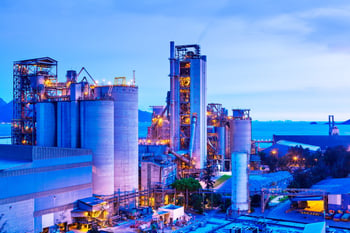 The chemical industry will continue to undergo rapid change in the next decade. Chemical companies must adapt quickly to maintain a competitive edge, overcome challenges, and embrace new market opportunities.
The chemical industry will continue to undergo rapid change in the next decade. Chemical companies must adapt quickly to maintain a competitive edge, overcome challenges, and embrace new market opportunities.
This article describes three major chemical industry trends to watch in the coming years, based on studies published by MarketsandMarkets, a global market research firm.
Megatrend #1: Sustainability and the circular economy
Key raw materials and energy supplies are getting tighter day by day. The ever-increasing impact of emissions and waste disposal has encouraged different agencies to set stringent environmental regulations
Global chemical companies are now operating as ecosystems ensuring sustainability and economy, resulting in less energy and resource consumption. The critical nodes of these ecosystems — raw materials, chemical production, applications, and end users — focus on raw material substitution and maximize the use of renewables, energy recovery, recycling, and re-use by end users to achieve the objective of the circular economy, thereby maximizing value and conserving the resources. A few examples are highlighted below:
- Bio-based plastics: Although drop-in or bio-based plastics are not compostable or biodegradable, they are fully recyclable and are designed to "drop-in" to the existing recycling systems without compromising the quality and increasing cost of the recycling stream.
- Battery material recycling: The battery materials recycling market is expected to be driven by increasing adoption of electric vehicles and growing regulations for recycling.
- Improving efficiency of wind turbines: Europe meets around 11% of its electricity demand from wind energy, and this dependence is expected to reach 25% by 2030. Switching to PX35 carbon fiber that has increased length, without adding much deadweight, will improve the blade efficiency, thus increasing power generated per wind turbine.
Megatrend #2: Digitalization
Digitalization is leading the innovation in all major industries, and chemicals are not too far behind in embracing the power of digitalization and its role in innovation. Digital technology will help chemical companies in many ways such as capturing critical data and drawing insights from it to achieve improved output at lower costs, scheduling preventative maintenance to minimize downtime, and facilitating accurate inventory planning to prevent stock outs.
Digitalization is expected to result in increased revenue and reduced cost, and at the same time, enhance the EBITDA margins by up to 9% in the industry. While many companies have already started leveraging what mobility and the Internet of Things has offered, machine learning and blockchain are expected to be the big disruptions in the chemical sector. Check out the specific examples below to see this trend in action:
- AI to drive efficiency: Manually matching color for automotive refinish is time-consuming. BASF’s Automotive Refinish Solutions division uses AI to match car colors according to customer requirements using artificial intelligence and neural networks.
- Sensors and IoT to transform logistics: Dow Chemical uses connected sensors to monitor temperature, humidity, shock, and light for thousands of shipments daily. The real-time data from sensors is fed into event-management software which generates timely alerts in case of an anomaly.
- Collaboration with tech giants key to remain ahead of the curve: Total SA has collaborated with Google Cloud to develop AI solutions that will use machine learning to analyze subsurface images for oil & gas exploration in applications such as production profile forecasting, automated analysis of satellite images, and analysis of rock sample images.
- Machined to perfection: Companies, such as Mikrosam AD (Macedonia), have developed automated systems for manufacturing premium-quality complex composites shapes for the aerospace, automotive, marine, oil & gas, and piping industries.
Megatrend #3: Innovation and accelerated globalization
The demand for chemicals continues to grow in emerging markets as their working-age population still is a huge driver for chemical industries. Shrinking product life cycles and the rush to commoditize products have increased the pace of globalization.
Last year, the majority of the M&A deals in the global chemical industry took place between the companies offering commodities and intermediates & specialty materials. Most of these deals happened in the US and China. There has been a major shift of production facilities to Asia in the last two decades. However, with the advent of shale gas in the US or coal-to-olefin technology in China, it will be really interesting for chemical manufacturers to see how things unfold.
Consider the following examples of innovation:
- Novel manufacturing process: Carbon fiber composite manufacturers and automotive OEMs are exploring ways to increase application of composite in automobiles. Faurecia (France) has developed “one-shot” manufacturing process for composite parts that not only improves quality but also reduces cost and cycle time.
- Making composites affordable: PlastiComp, Inc. commercialized its new hybrid long glass and carbon fiber composites in two thermoplastic polymer matrices, thus reducing the cost of CFRP without compromising its high-performance benefits.
- Advanced materials for better insulation: Insulation materials, such as aerogel and phase change materials, will provide energy savings and better thermal comfort in comparison to traditional insulation materials and witness double-digit rate of growth.
Key takeaways
All three trends converge to challenge the chemicals industry and influence the strategic decisions of leading global chemical producers. The agile and early adopters of these changes will have the competitive advantage over others as the conventional strengths such as easy access to raw material, proximity to customers, and R&D may no longer be sufficient to sustain a competitive edge.
At MarketsAndMarkets, we keep tracking these megatrends and their impact on the industry participants. We publish intelligence future high growth markets well ahead of others. Some relevant chemical industry reports are mentioned below:
- Bioplastics & Biopolymers Market
- Lithium-ion Battery Recycling Market
- Long Fiber Thermoplastics (LFT) Market
- Artificial Intelligence in Manufacturing Market
- IoT in Manufacturing Market
About the Author: Sarang Wadyalkar is an Associate Manager of Chemicals and Materials at MarketsandMarkets.

